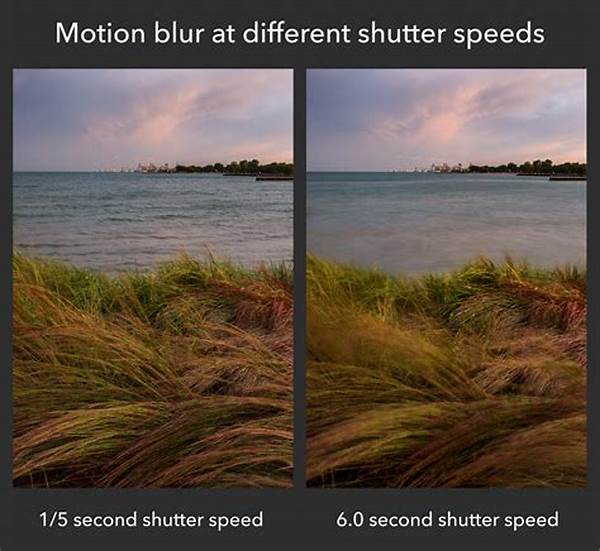Hey there, fellow creatives! 🌟 Today, we’re diving into something super cool: negative space in visual storytelling. If you’re not already a fan of using blank or empty areas to make your art speak volumes, then buckle up because this technique is a game-changer. Whether you’re into photography, design, or film, understanding how to utilize negative space can take your stories to the next level.
Read Now : Techniques For Sharp Portrait Focus
The Importance of Negative Space
Let’s break it down. Negative space isn’t just about creating empty areas; it’s about emphasizing what truly matters in a visual composition. Imagine a photograph where the central figure is surrounded by a vast landscape. That vastness isn’t just emptiness; it’s a deliberate choice to highlight the subject’s solitude or vulnerability. Similarly, in design, negative space can make headlines pop or draw attention to important details without overwhelming the viewer. Essentially, negative space in visual storytelling allows the narrative to breathe, giving depth and context that might otherwise be lost in a cluttered scene.
In films, directors often use negative space to convey emotions silently. Consider a scene where a character sits alone in a room with shadows engulfing them—this isn’t just a set choice but a narrative one that speaks to their internal state. So, next time you’re crafting a story through visuals, remember that what you leave out is just as crucial as what you include. Negative space in visual storytelling is your silent partner, whispering the unspoken parts of your tale.
Creative Uses of Negative Space
1. The Minimalist Approach: Imagine a scene with a single tree in a wide-open field. This use of negative space in visual storytelling highlights isolation or focus on the subject.
2. Highlighting Emotions: A lone figure on a vast beach can evoke feelings of loneliness or freedom, thanks to clever use of negative space in visual storytelling.
3. Creating Tension: Negative space can create a sense of unease or suspense, often used in thrillers where shadows suggest unseen threats.
4. Guiding the Eye: Designers and photographers use negative space to lead viewers’ eyes to the focal points of the piece, making the story clear without words.
5. Balancing the Composition: This technique ensures that your visual elements don’t overcrowd the scene, allowing each piece of the story to have its moment.
Making Emotion with Empty Spaces
Negative space in visual storytelling isn’t just a tool; it’s an art form. By deliberately choosing where ‘nothing’ goes, you invite the audience to fill in the blanks with their interpretation. It’s like an open-ended story where everyone leaves with a different understanding. This visual breathing room can lead to emotionally powerful narratives.
Photographers often exploit negative space to make their subjects pop, drawing attention to them by surrounding them with simplicity. The result? A strong emotional response from viewers who are given the space to engage more intimately with the subject. Remember, in storytelling—visual or otherwise—less is often more.
Tips and Tricks for Mastering Negative Space
1. Use It Sparingly: Negative space doesn’t mean you should neglect positive space. Balance is key.
2. Think About the Message: What are you trying to convey? Use negative space in visual storytelling to reinforce this.
3. Focus on Simplicity: Too much clutter can distract from your message.
4. Experiment with Composition: Move elements around to see how different placements affect your story.
5. Play with Contrast: Light and dark, warm and cool—contrast can enhance the power of negative space.
Read Now : “fashion-forward Remote Work Outfits”
6. Use Color Wisely: Sometimes, a splash of color can add meaning to an empty space.
7. Look for Inspiration: Analyzing art and photography can give you new ideas on using negative space.
8. Don’t Overthink It: Sometimes the most effective use of negative space is instinctive.
9. Pacing in Storytelling: Like a musical pause, negative space provides rhythm to your narrative.
10. Practice Makes Perfect: The more you experiment, the more intuitive your use of negative space will become.
Captivating Stories with Less
So, what makes negative space in visual storytelling so captivating? Well, it’s all about minimalism meeting meaningfulness. When we strip away the clutter and distractions, the core elements shine. Think of it like storytelling Zen—only what’s essential remains, and it speaks volumes. This technique invites the audience to actively participate in the narrative, filling in the blanks with their imagination.
In films and photographs, negative space creates a visual solitude that’s often more powerful than words. It evokes emotions, like loneliness or freedom, by merely showing a vast empty space around a subject. A minimalist design can lead viewers exactly where you want them to look, without forcing their gaze. Negative space, therefore, is the art of saying more with less, creating a deep connection without unnecessary noise.
Unpacking Negative Space Vibes
Yo, let’s talk about them vibes you get from negative space in visual storytelling. It’s like, minimalism but with hella depth, y’know? Clever placement of empty space gives life to what’s there. It lets your mind wander and fill in those blanks. In films, it’s all about the feels—like, how shadows can do the talking. No words needed.
Ever see a design or photo that’s simple, yet profound? That’s negative space workin’ its magic, making sure nothing is too loud so the message hits right. It’s the unsung hero of storytelling—master it, and you’re bossin’ your narrative with just the right touch of mystery.
Wrapping Up the Space Talk
Alright, let’s wrap up our chit-chat on negative space in visual storytelling. This powerful tool isn’t just about leaving parts of your frame empty—it’s about adding context and depth to your story. Whether you’re a photographer, filmmaker, or designer, embracing this technique can transform your narratives from cluttered to compelling.
While we often focus on what we include in our visuals, it’s crucial to remember the impact of what we don’t include. The deliberate choice to leave certain areas blank can underscore emotions, emphasize subjects, and lead viewers’ eyes where you want them to go. In doing so, negative space in visual storytelling becomes an active component of your artistic expression. So, next time you’re crafting your visual masterpiece, give a nod to the unsaid and the unseen. You might just create a narrative that lingers in the minds of your audience, long after they’ve looked away.



